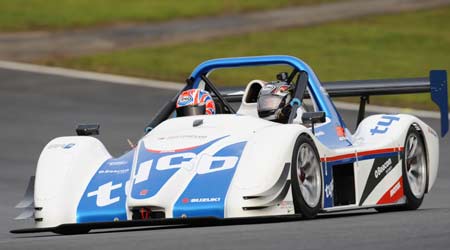Motorcycle Engine Dry Sumps
The concept of using a motorcycle engine to power a small racecar or sidecar outfit is well established and very effective - bike engines are small, light and very powerful, giving excellent straight-line acceleration and weight-saving potential. There are, however, some fundamental differences between the bike and car-sidecar applications that can lead to oil surge and potential engine failures.
The biggest differences in lubrication needs between an engine fitted in a motorcycle and one fitted in a car are the levels and direction of forces the oil is subjected to. Notably motorcycles lean, in the case of racing bikes very heavily, during cornering. This means the oil is subject to the same forces as oil in the sump of a car, but the orientation of the bike means it remains in the bottom of the sump, rather than being pushed up the sides as it is in a car. Because of this, the oil pick-up system will be optimised to operate under these conditions, so when placed in a racecar (which does not roll) oil starvation and surge can become a problem. The other issue is from a packaging perspective, as standard motorcycle sumps tend to be very deep, which is less than ideal for attaining a low centre-of-gravity height. A lower-profile sump is therefore often desirable.
There are a number of ways to ensure that a bike-engined-car does not suffer from oil starvation. The simplest, though least effective, is simply to overfill the sump with oil. This though can lead to high oil usage and increased windage. A second solution is to use a sump baffle system, as in car engines. These can be very effective, but this effectiveness depends on the engine type and the orientation of its installation.
The Yamaha R1 (1999-2003) engine is a good example of where a baffle system can be a suitable solution. Taking the experiences of various sidecar racing teams, it appears the R1 can get away with a simple baffle plate, a relief shroud and a small overfill of oil. This provides enough performance in a sidecar outfit, capable of cornering at over 2 g, so it should be sufficient for cars producing medium amounts of aerodynamic grip. It is also negates the weight, complexity and expense of a dry-sump system.
A further tool that can assist in ensuring regular lubricant flow is a moveable oil pick-up pipe. Several manufacturers of sump systems specifically for bike-to-car transplants offer sump plates with a flat bottom and swinging pick-up to cater for this.
For some applications, even the most highly optimised wet sump will be insufficient to deal with the forces generated. Many bike-engined racers, especially those used for hillclimb or sprint events, have extremely powerful aero packages and are capable of producing prodigious amounts of downforce, resulting in cornering g-forces that would overwhelm the best wet sump. It is therefore necessary to fit a dry sump lubrication system to prevent engine damage.
There are plenty of engine-specific systems on the market to cater for this need. Many use the original engine’s oil pump, with extra pick-ups in the sump, while others rely on an external pump. In some applications, particularly those using Suzuki’s 1300 cc Hayabusa engine, the scavenge pump for the system replaces the engine-driven water pump (while retaining the original pressure pump). Water pumping duties are then completed by a separate electric pump.
From a packaging perspective, this type of system is ideal, as it adds very little to the size of the engine envelope. It should be noted though that most bike engines do not have useful accessory drive pulleys to drive external pumps in the way car engines do, so the drive to any external pump must use existing gear drives from the engine.
Some of the most in-depth research regarding dry-sumped motorcycle engines has been undertaken by Formula Student/FSAE teams, which invariably run such engines. For those looking for more information, a search of Google Scholar will flag up many student papers on the subject.

Fig. 1 - Lubrication systems in bike-engined cars such as the Radical SR3 need careful consideration to ensure sufficient oiling (Courtesy of Radical Sportscars)
Written by Lawrence Butcher